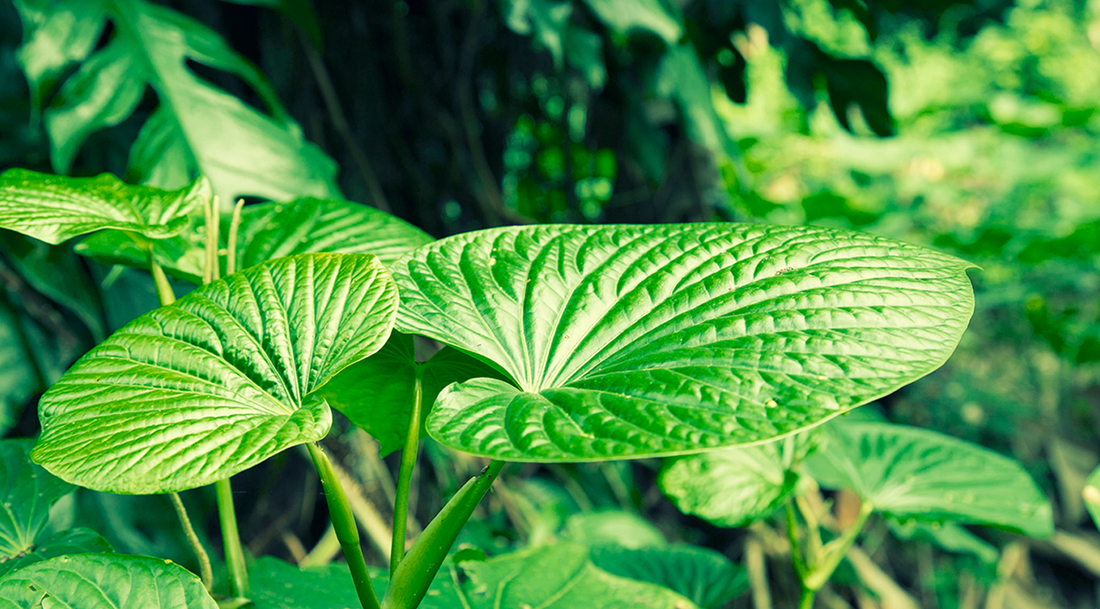Understanding Kava’s Reverse Tolerance: What It Means and Why It Matters
07/29/2025 | reading time: 5 minutes WRITTEN BY: Natalia De Melo
Kava (Piper methysticum), a plant native to the South Pacific, has gained recognition for its calming, mood-supportive properties. Used traditionally in ceremonial and social settings for centuries, kava has become a popular natural alternative for promoting relaxation without sedation or mental fog.
But one of the more unusual and often misunderstood aspects of kava is something known as “reverse tolerance.” For new users especially, this can create confusion—or even skepticism. In this article, we’ll break down what reverse tolerance means, why it happens, and how to approach kava with patience and intention.
What Is Reverse Tolerance?
Reverse tolerance refers to a phenomenon in which a person does not immediately feel the full effects of a substance when first using it—but begins to feel those effects more noticeably over time with repeated use.
Unlike typical tolerance (where the same dose becomes less effective the more often you take it), reverse tolerance means your body may take a little time to “learn how to process” kava effectively.
This experience is common among first-time kava users, who may take a recommended dose and feel very little—only to report stronger effects from the same dose days or weeks later.
Why Does Kava Have Reverse Tolerance?
While research is ongoing, several theories help explain why kava may work this way:
1. Kavalactones May Require Accumulation
Kava’s calming effects come from compounds called kavalactones, which interact with GABA-A receptors and other neurological systems. Some researchers believe the body may need time to “build up” these compounds or adjust sensitivity at the receptor level for full effect.
2. Liver Enzyme Adaptation
Kava is metabolized in the liver. Some believe that liver enzyme pathways may adapt over time, making it easier for your body to break down and use kavalactones effectively.
3. Individual Body Chemistry
Factors such as body fat, diet, gut health, and even hydration can affect how efficiently your body processes botanical compounds. Some users simply need more time than others to feel the full effects of kava.
What Does It Feel Like?
For first-time users experiencing reverse tolerance, kava may feel:
-
Subtly relaxing, but not dramatic
-
Like a “background calm” rather than a noticeable shift
-
Mild or even underwhelming, especially if comparing it to stronger substances
However, after a few sessions (often 3–5 days of regular use), many users begin to report:
-
A deeper sense of relaxation or well-being
-
Muscle tension relief
-
A mild euphoric or social effect
-
Less racing thoughts and greater ease winding down
How to Navigate Reverse Tolerance
If you’re new to kava, here are a few tips to help you work through the adjustment period:
1. Be Patient
Kava affects everyone differently, and some people need several sessions before the full effects become noticeable. Don’t be discouraged if you don’t feel much at first—this is completely normal and often temporary.
2. Don’t Overdo It
Taking more to “force” an effect can backfire. Start with the recommended dose and give your body time to respond.
3. Choose High-Quality Kava
Not all kava is equal. Look for noble kava strains and avoid products with fillers, artificial additives, or tudei kava (which may have undesirable side effects). Reputable sources will offer chemotype breakdowns and lab testing.
4. Try on an Empty Stomach
Kava tends to work best when taken without food. Try consuming it 1–2 hours after eating for optimal absorption.
Should You Be Concerned?
Not at all. Reverse tolerance is normal, temporary, and not harmful. In fact, many people see it as a reassuring sign—a reminder that kava doesn’t overpower the system or rely on rapid-onset effects. It’s a slow-build botanical that works with your body, not against it.
Final Thoughts
Kava’s reverse tolerance may seem confusing at first, but it’s simply part of how this traditional plant works. With a little patience and consistency, most people find that kava’s relaxing, centering effects become clearer and more consistent over time.
At BETT, we value formulations that are safe, transparent, and effective—without rushing or overstimulating the experience. If you’re looking for a plant-based way to unwind, kava could be the right fit—just give it the time it deserves.





